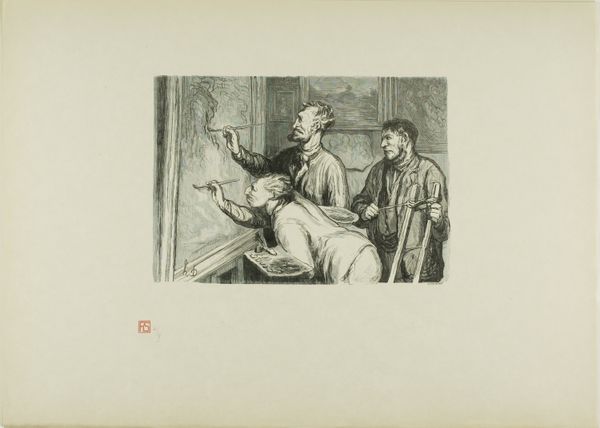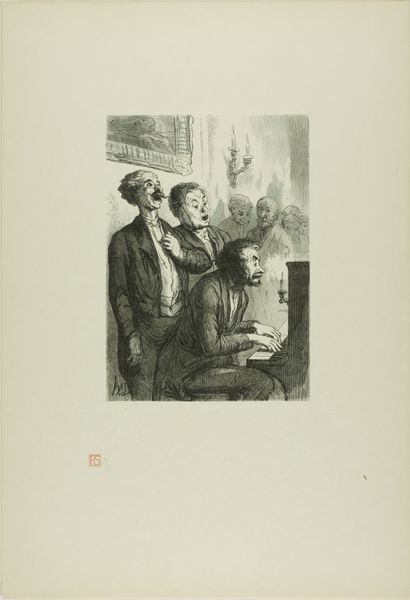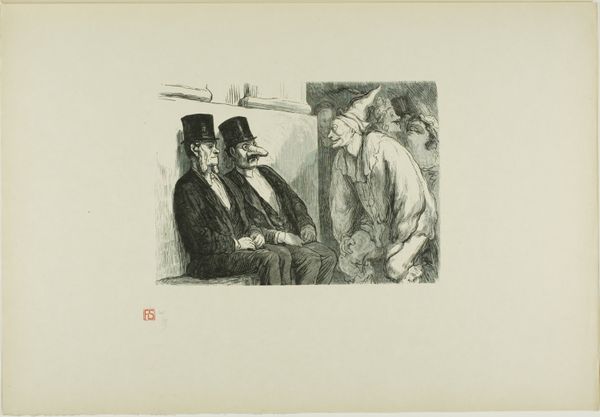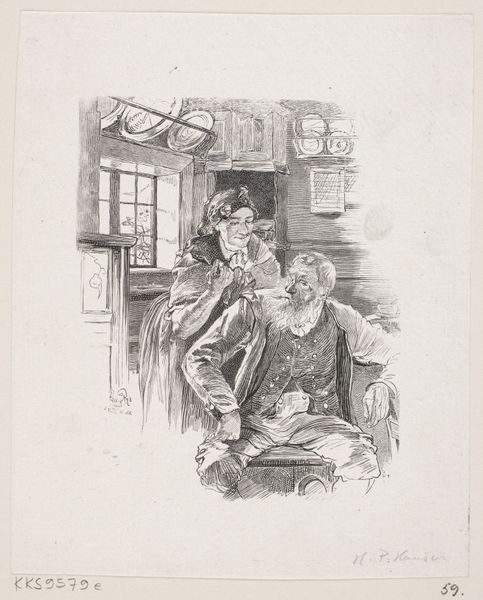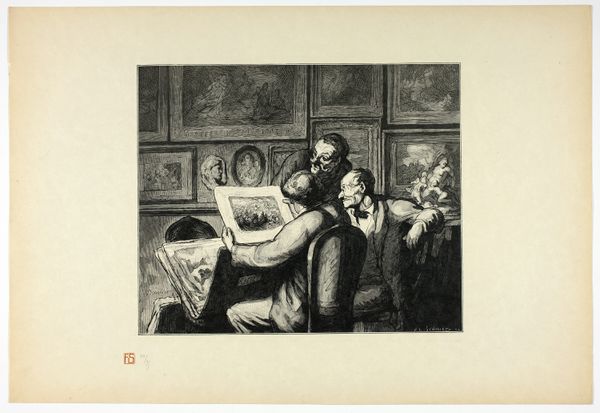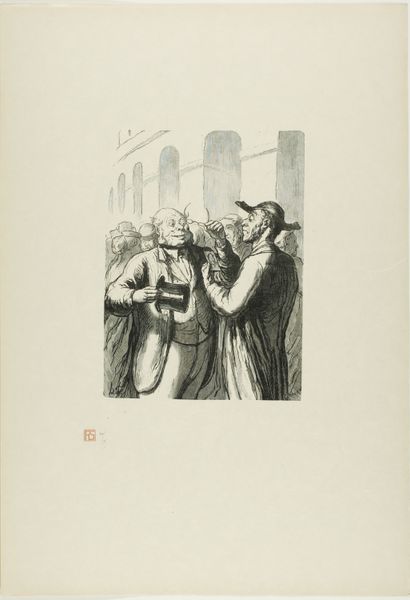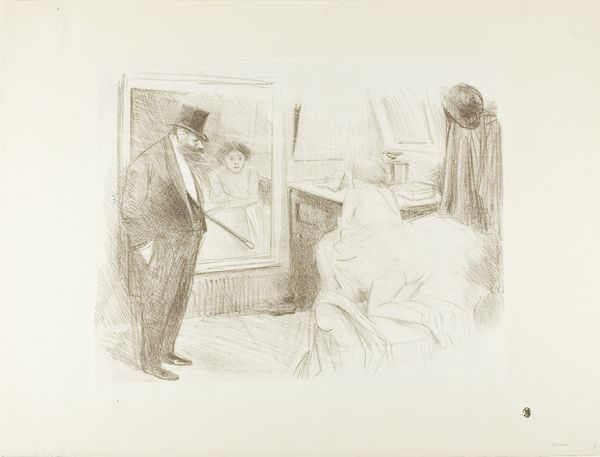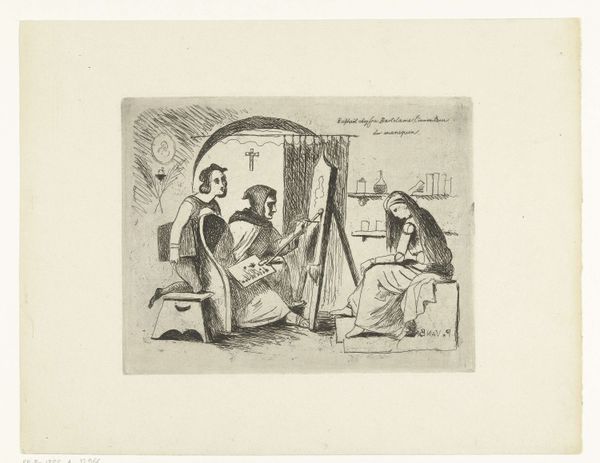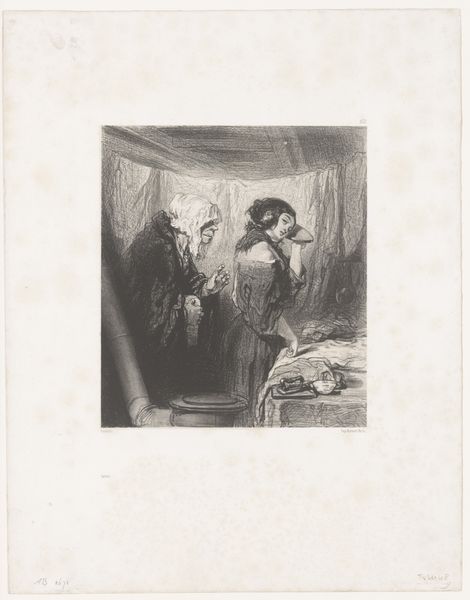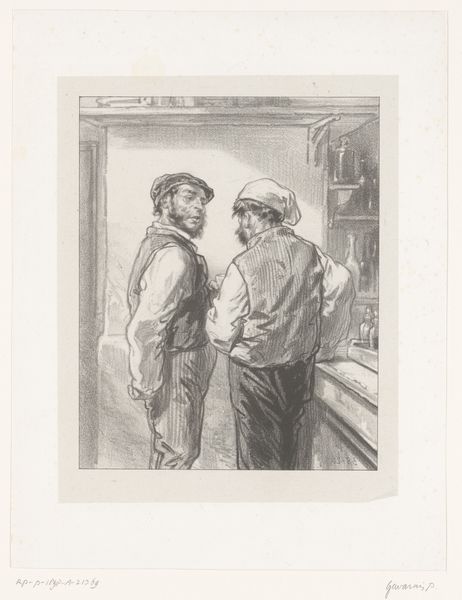
One Realist Will Always Find Another Realist who Admires His Work Possibly 1869 - 1920
0:00
0:00
drawing, print, paper, engraving
#
portrait
#
drawing
# print
#
paper
#
genre-painting
#
academic-art
#
engraving
#
realism
Dimensions: 161 × 225 mm (image); 320 × 459 mm (sheet)
Copyright: Public Domain
Curator: Ah, here's a rather intriguing print, “One Realist Will Always Find Another Realist Who Admires His Work.” The artist, Etienne Carjat, may have created this anytime between 1869 and 1920, working in engraving on paper. Editor: Well, right away, there’s a certain humor in this that the artist has captured effectively; it almost feels like we're intruding on a private joke, wouldn't you say? The lines seem precise, deliberate, yet imbued with a playful irony. Curator: Absolutely. The scene speaks volumes about the artistic community of the time, those notions of realism clashing perhaps with grander ideals and styles. Editor: The positioning of the figures feels significant. One artist appears to be painting, or about to, while the other looks on in admiration. A relationship between artist and patron or mentee and mentor? Curator: Possibly. One could interpret the artist's palette and the tools of his trade as symbolic of the act of creation itself, a conduit to emotional expression through craft. The candle still life is of interest in this work—does that lend symbolic illumination to a mundane and fleeting exchange? Editor: I see it. In terms of composition, I am curious about the gaze each figure adopts: one artist, almost cocky, directs their eyes above; while the other bows to them in seeming acceptance. It reads like an allegory. And of course, the surface is a print on paper, a fairly reproducible format – what statements did this make? Curator: Interesting point—to disseminate artistic and creative perspectives is certainly one aspect of this image; through printing we might look to democraticising and deconstructing previous symbolic weightings in society? Editor: So, it invites not only admiration for the visible content of realist practices, but also for the means of the image itself. We observe two men as though the audience are a part of that silent acknowledgement and self-worship. Curator: Precisely. It reveals cultural memory and continuity through the symbols, in visual form and reproduction. I hadn't quite considered that interplay of technique and statement before. Thank you for expanding that viewpoint! Editor: And thank you for your insight into the layered symbolism at play.
Comments
No comments
Be the first to comment and join the conversation on the ultimate creative platform.
